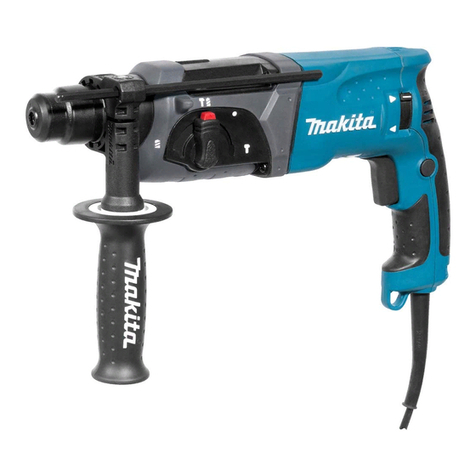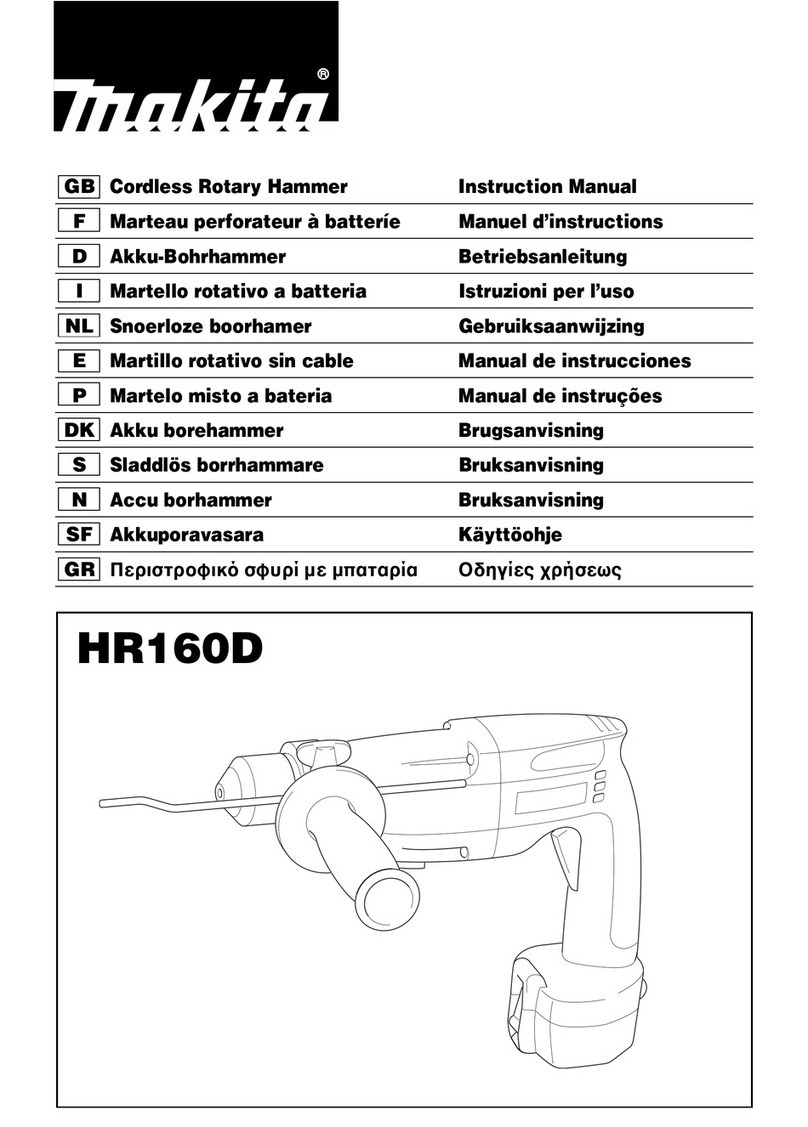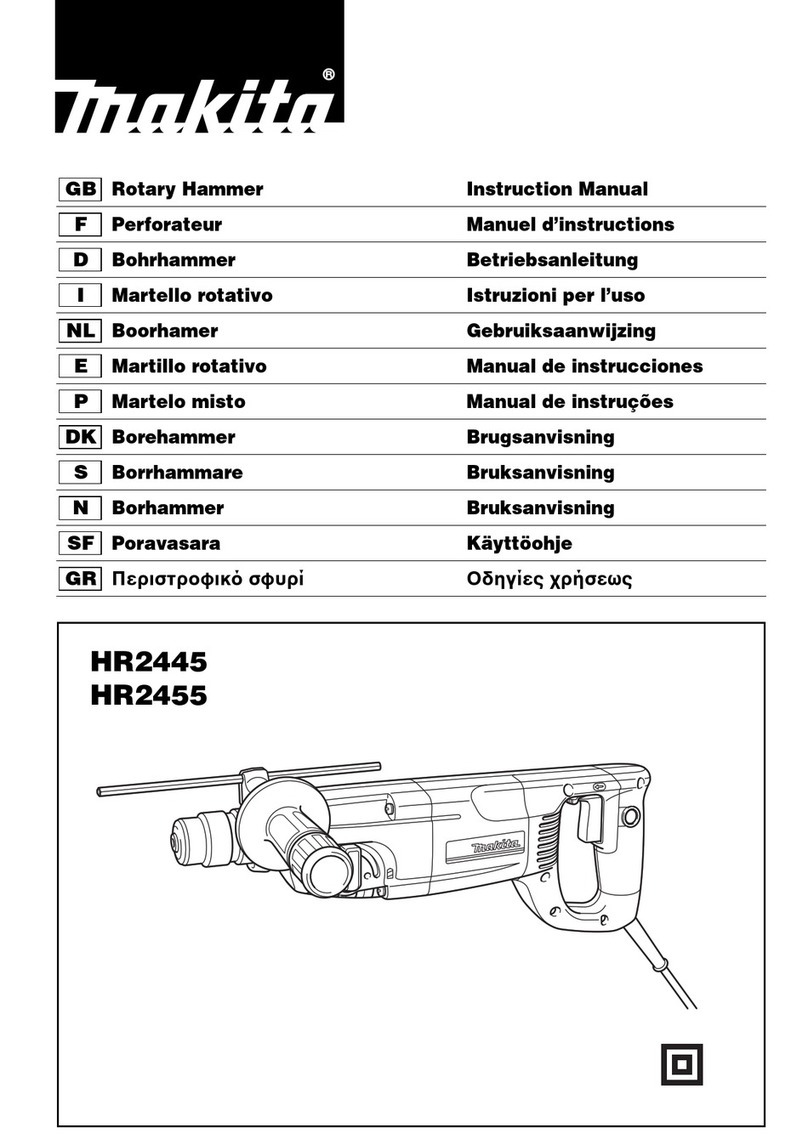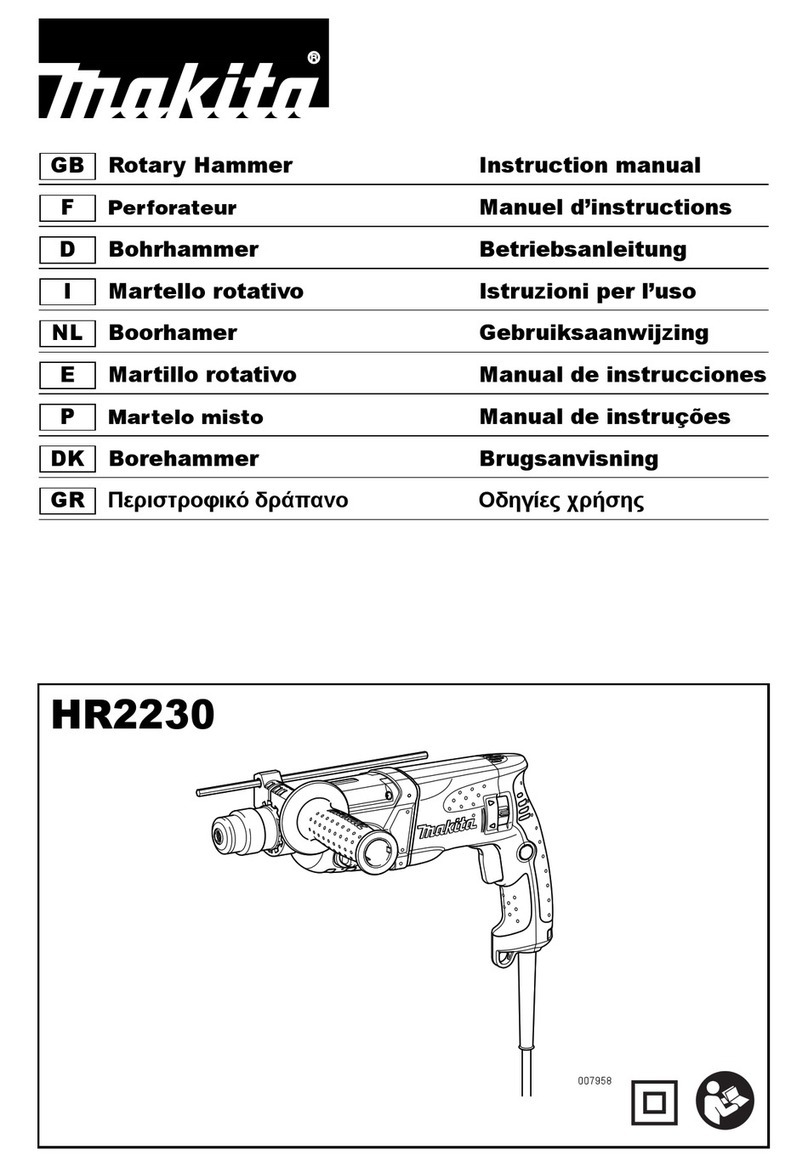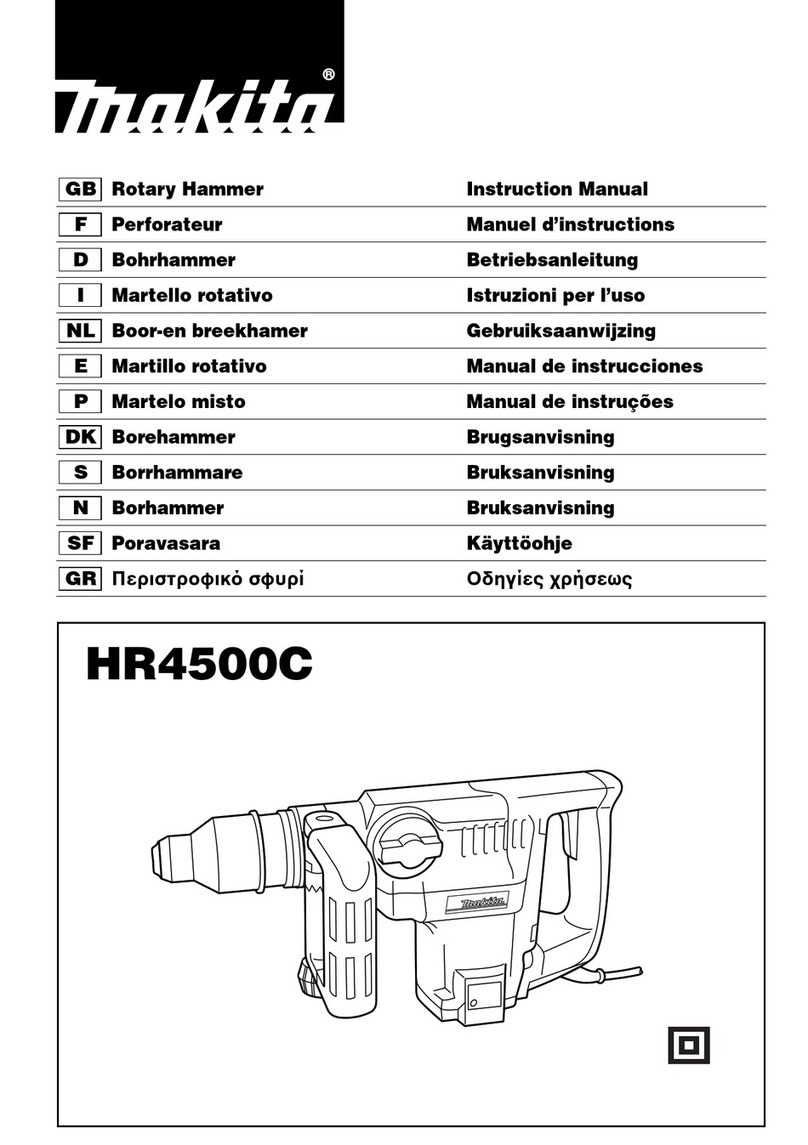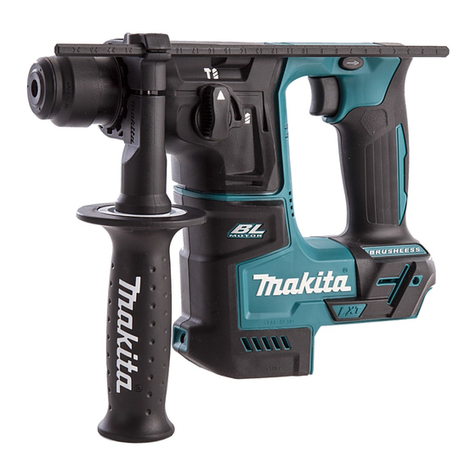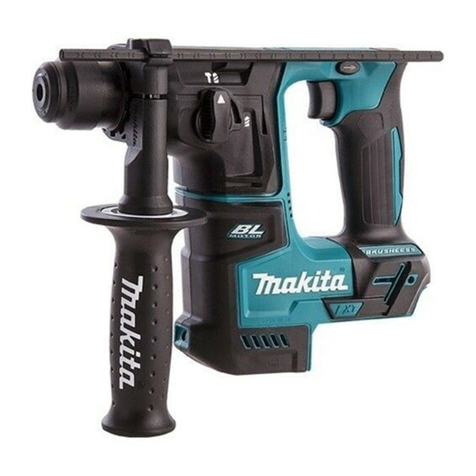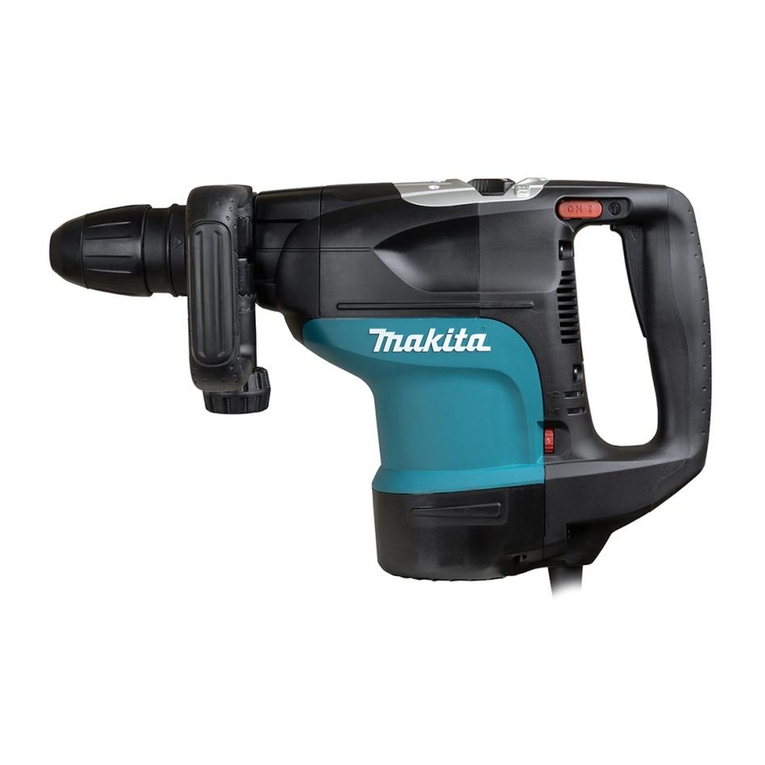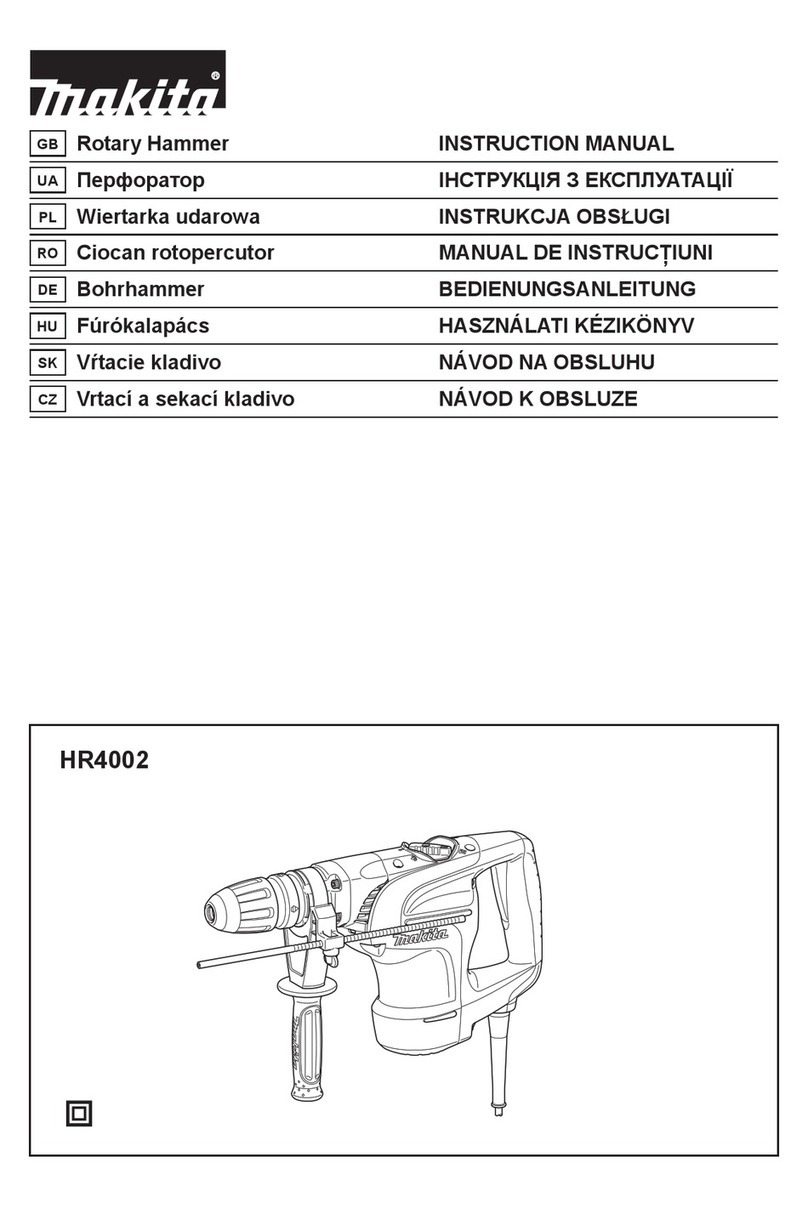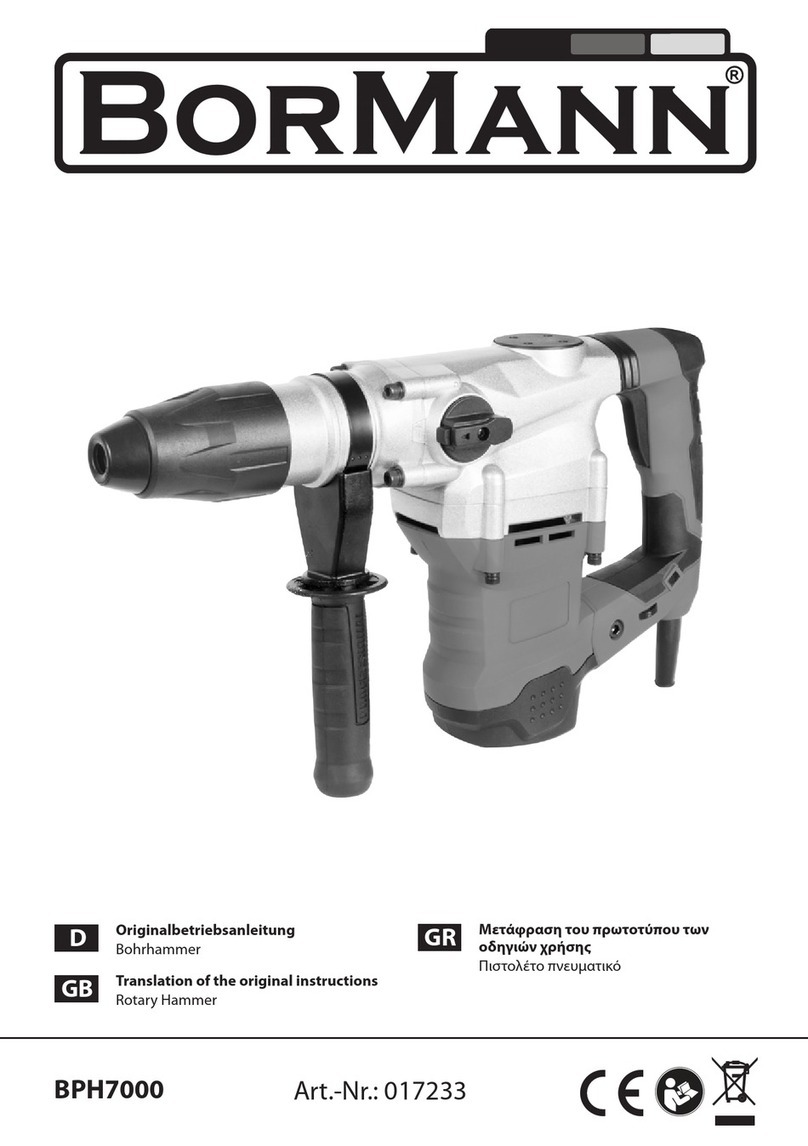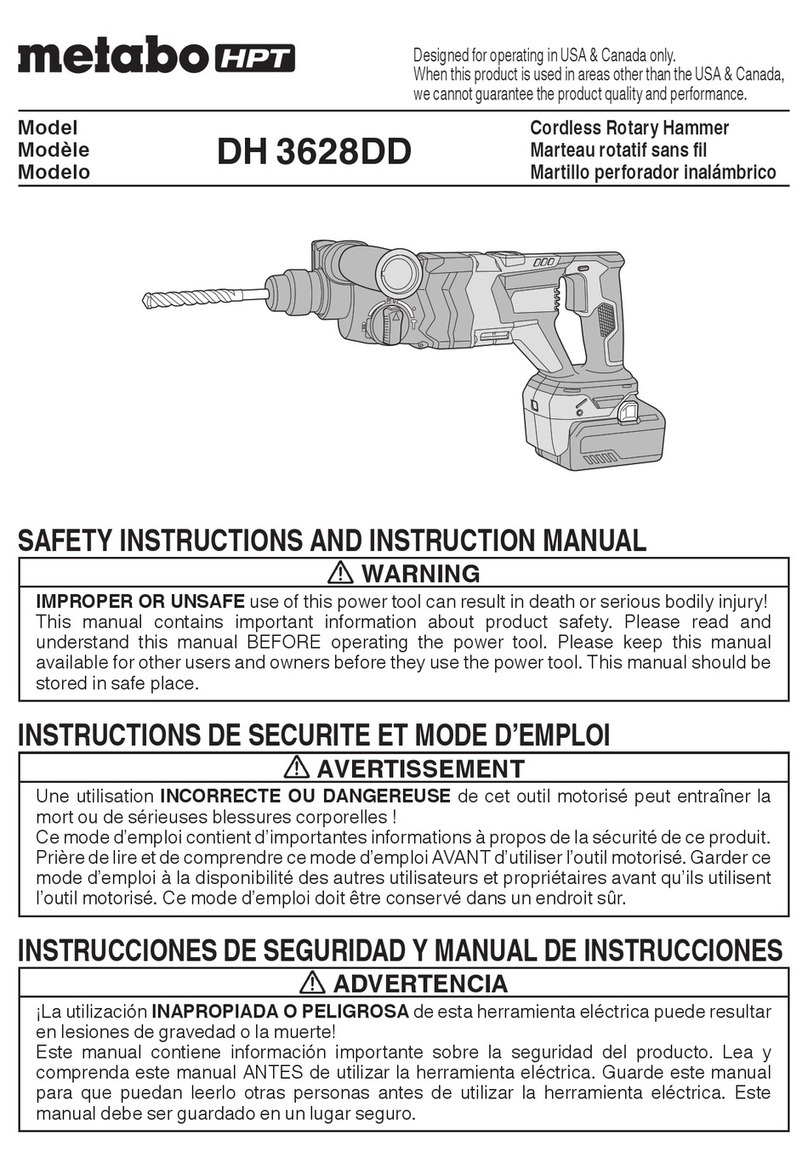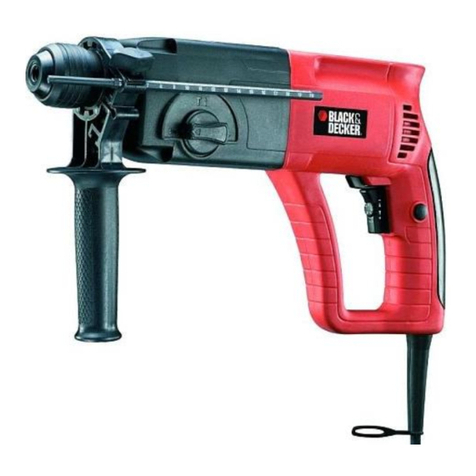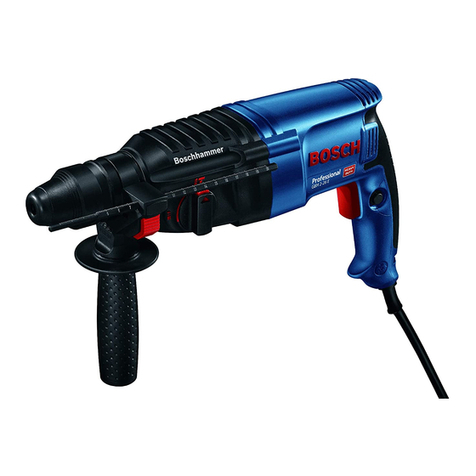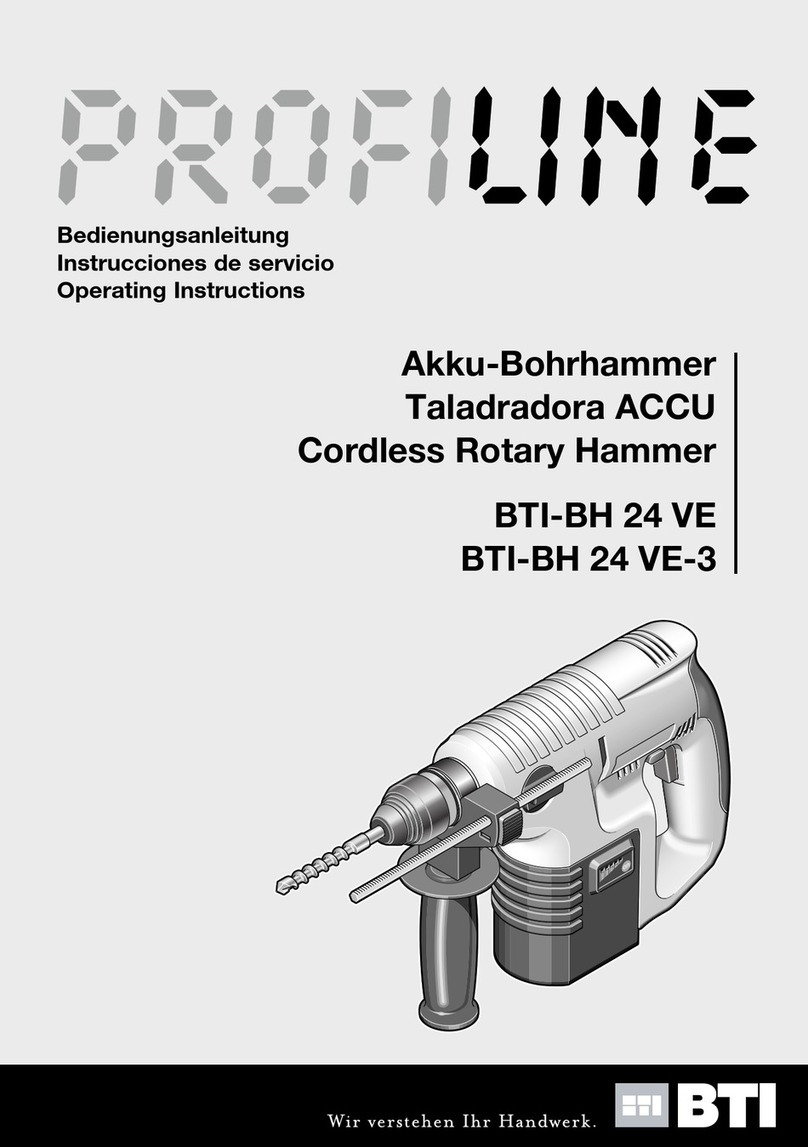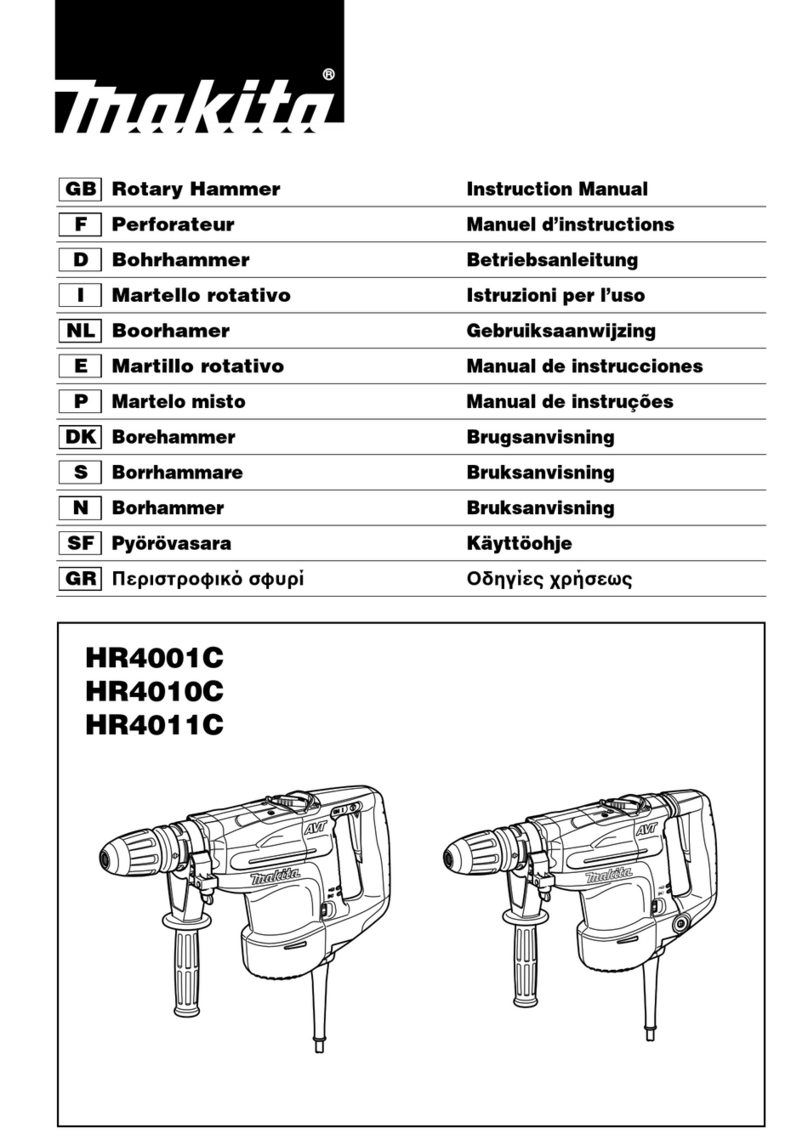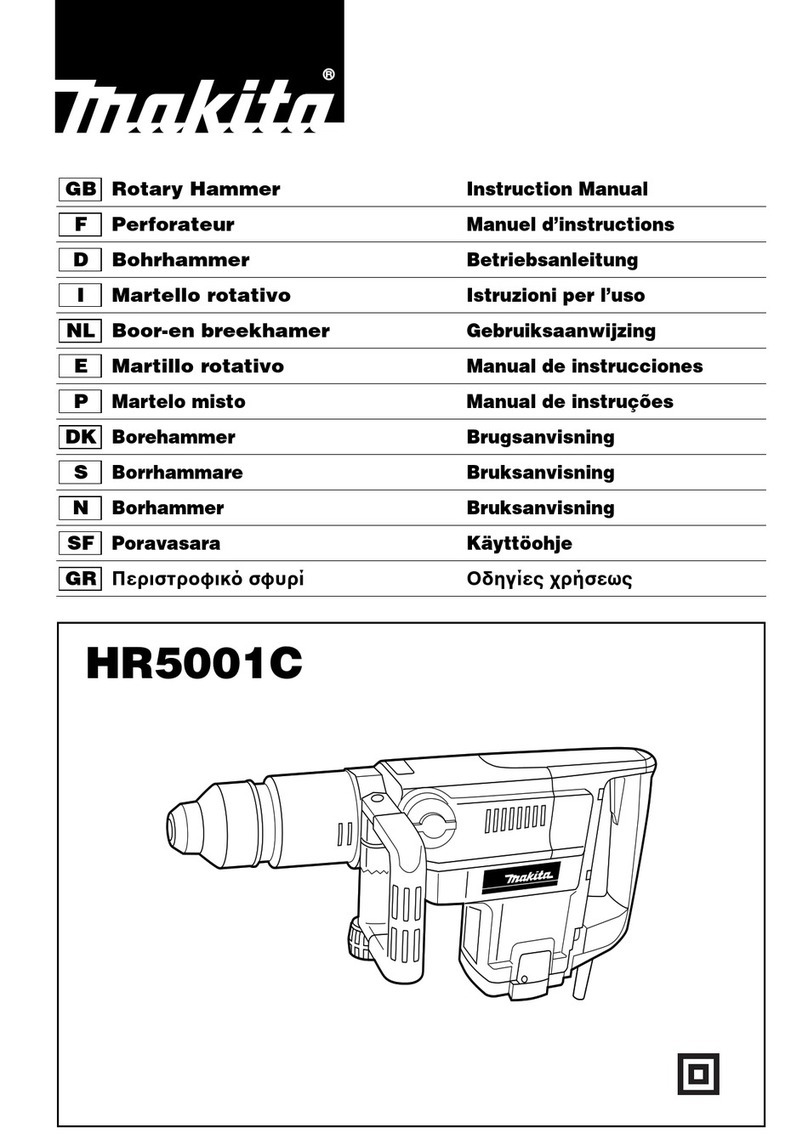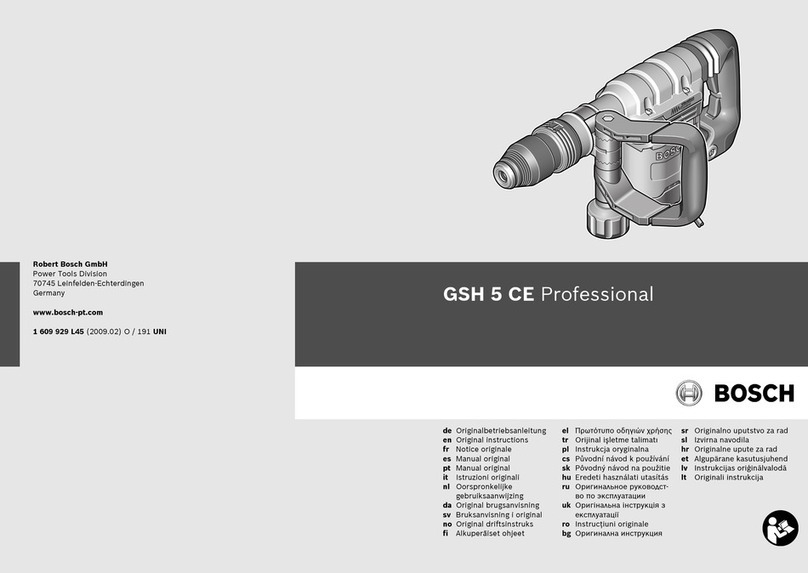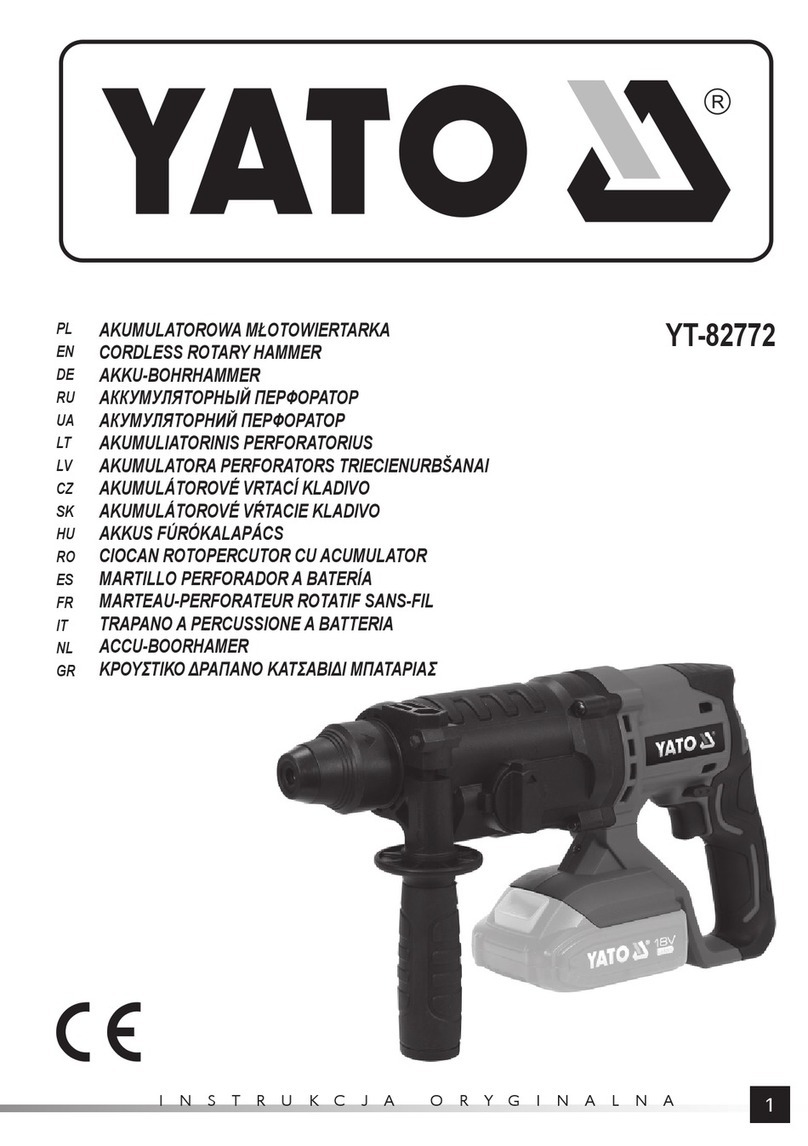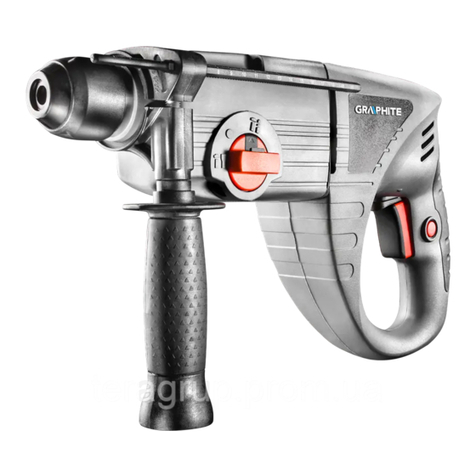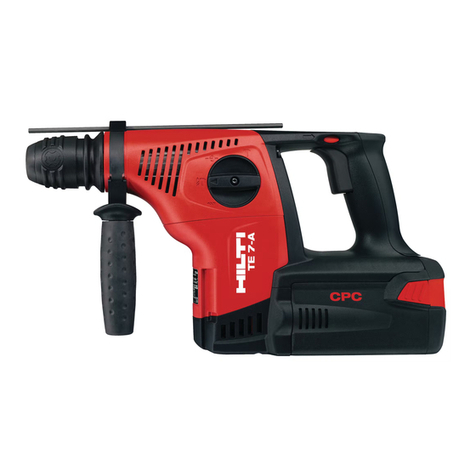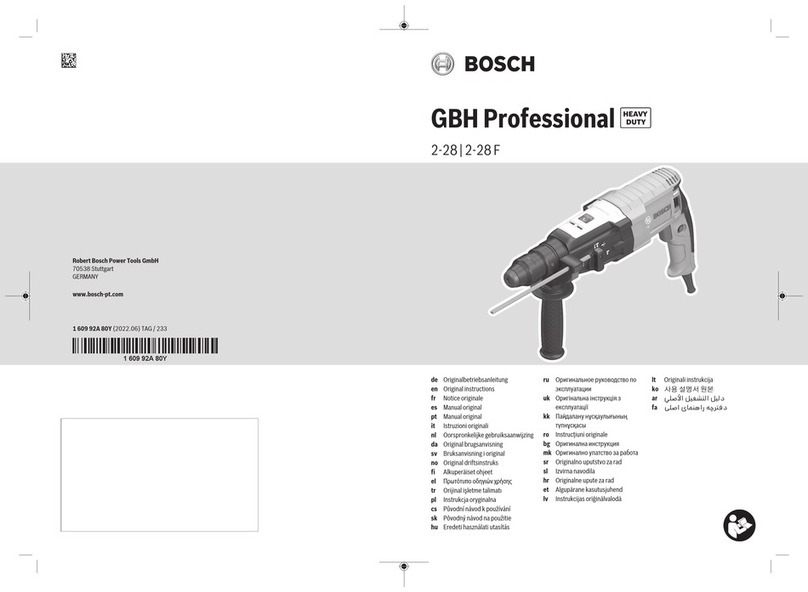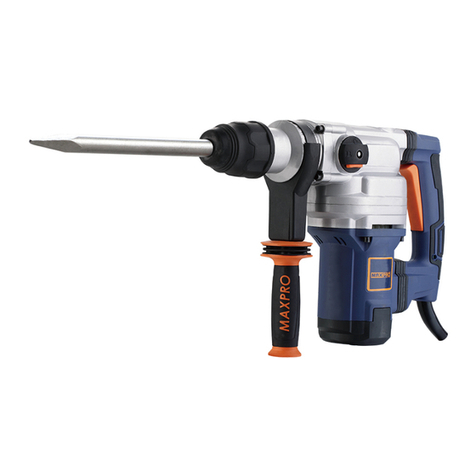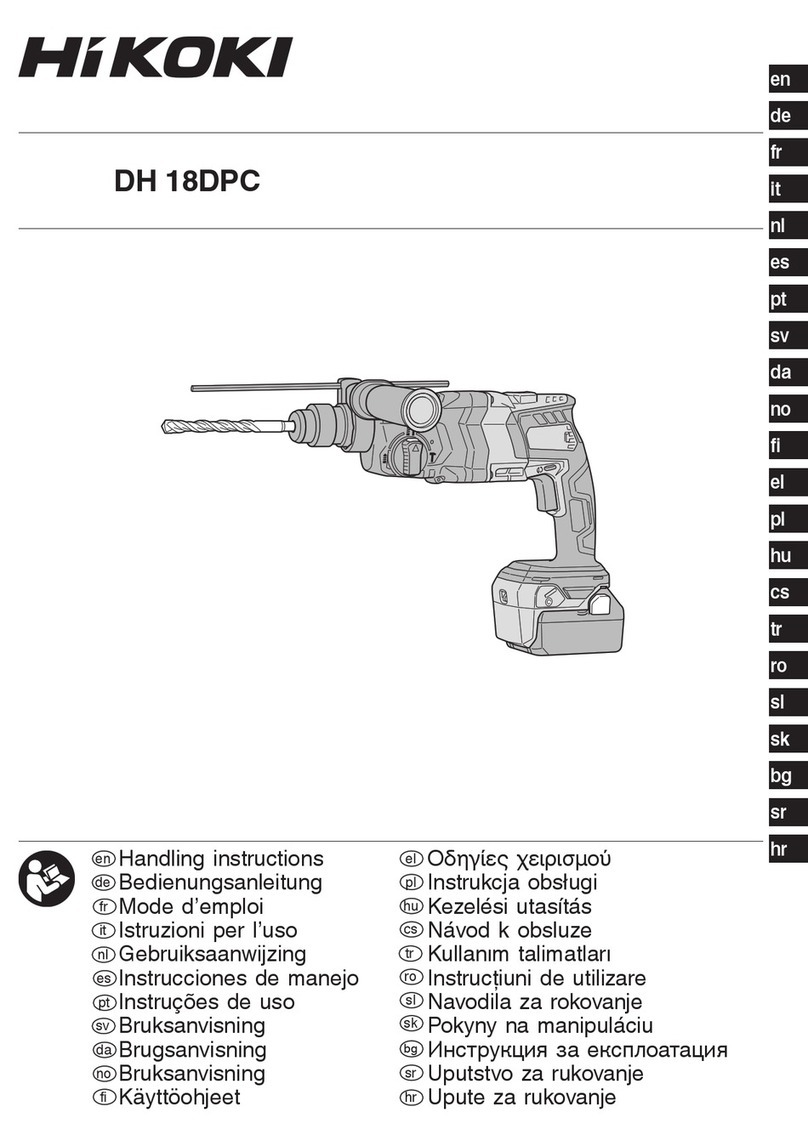Specifications
CONCEPTION AND MAIN APPLICATIONS
Models No.
Description
PRODUCT
P 1 / 16
Dimensions : mm ( " )
Width (W)
Height (H)
Length (L)
118mm (4-5/8")
488mm (19-1/4")
For matured line-up of SDS-Max Rotary Hammers, Model HR4500C
has been developed as a sister model to HR4000C(40mm;1-3/4") and
HR5001C(50mm;2") which are already popular to users around the
world.
HR4500C
Rotary Hammer 45mm (1-3/4")
278mm (11")
Continuous Rating (W)
Voltage (V) Current (A) Cycle (Hz) Input Output Max. Output(W)
120
110 13 50/60 1,300 600 1,500
100 15 50/60 1,300 600 1,500
13 50/60 1,250 600 1,500
1,500
1,500
1,500
220 6.6 50/60 1,300 600
230 6.6 50/60 1,300 600
240 6.8 50/60 1,300 600
TECHINICAL INFORMATION
Performing excellent drilling in concrete within the diameter range
from 25mm(1") to 45mm(1-3/4"), it also has the same features and
benefits as HR4000C and HR5001C.
Hammer Grease (30cc), Blow-out Bulb, Dust Cup 5, Dust Cup 9, Bull Point, Cold Chisel, Scaling Chisel,
Clay Spade, Bushing Tool, Rammer, Safety Goggles, Core Bit Adapter,
Core Bits; Hole diameter : 20mm(13/16"), 30mm(1-3/16"), 35mm(1-3/8"), 40mm(1-9/16"), 45mm(1-3/4"),
54mm(2-1/8"), 65mm(2-9/16"), 79mm(3-1/8"), 105mm(4-1/8"), 118mm(4-5/8")
Tungusten-carbide Tipped Bits; Bit diameter : 10mm(3/8"), 10.5mm(7/16"), 11mm(7/16"), 12mm(15/32"),
12.5mm(1/2"), 12.7mm(1/2"), 13.5mm(1/2"), 14.3mm(9/16"),
14.5mm(9/16"), 16mm(5/8"), 17mm(11/16"), 17.5mm(11/16"),
18mm(11/16"), 19mm(3/4"), 20mm(13/16"), 21.5mm(7/8"),
22mm(7/8"). 24mm(15/16"), 25mm(1"), 25.4mm(1"), 26mm(1"),
28mm(1-1/8"), 30mm(1-3/16"), 32mm(1-1/4"), 35mm(1-3/8"),
38mm(1-1/2")
120 - 240
1,250 - 2,550
SDS-Max shank bit
18 (11/16")
No load speed Rotations per minute : rpm=min-1
Blows per minute : bpm=min-1
Bit type
Diameter of shank : mm (")
Drilling capacities
: mm (")
Net weight : Kg (lbs)
Cord length : m (ft)
7.8 (17.2)
Standard spec. : 5 (16.4)
European spec. : 4 (13.1)
STANDARD EQUIPMENT
45 (1-3/4")
Tungusten-carbide
tipped bit
Core bit 125 (4-7/8")
Grip 36 Assembly
(Bar style side handle) ------------ 1pc.
Depth Gauge ----------------------- 1pc.
Grease Vessel (Bit Grease) ------- 1pc.
Plastic Carrying Case ------------- 1pc.
Side Handle Assembly
(D-shaped side handle) ----------- 1pc.
OPTIONAL ACCESSORIES
The standard equipment for the machine may differ from country to country.
See next page for detailed information.
L
W
H
